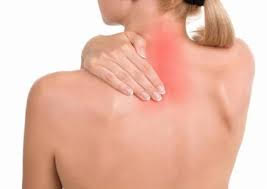
What is cervical, cervicobrachialgia?
Cervical disease is an attack of sharp acute pain in the neck with significant restriction of movement.
Cervicobrachialgia - pain in the cervical spine one or two-sided, giving to one or both hands.
What is the cause of cervical and cervicobrachialgia?
The cause of acute pain in the cervical spine with muscular tension, restriction of movement, with recoil in the hand, with the fingers or with or without osteochondrosis at all stages. However, most often cervicobrachialgia occurs with irritation or entrapment of the nerve roots with protrusions of the discs, disc hernias, osteophytes with deforming spondylosis (delayed salts) or hypertrophied (thickened) ligaments. Below is a diagram of the anatomical structure of the cervical spine. This is the norm.
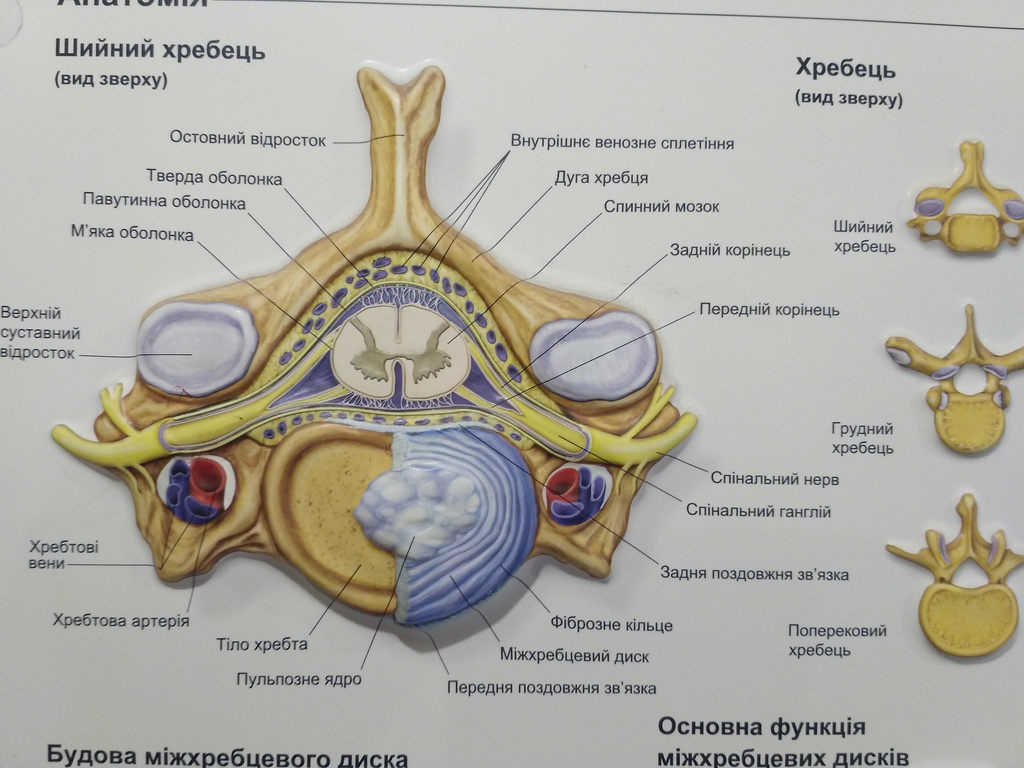
The problem is shown here: intervertebral hernia puts pressure on the nerve root, resulting in pain in the hand, numbness of the fingers and thinning of the tenor muscles - in this case - on the right hand
What are cervical and cervicobrachialgia?
Cervical and cervicobrachialgia is acute (up to 1 month), subacute (up to 3 months) and chronic (over 3 months).
What complaints do patients with cervical disease and cervicobrachialgia have?
In the acute stage, patients complain of severe neck pain, significant restriction of movement, pain in the arm, most often in the shoulders and forearms. Frequent complaints are sensitivity disorders of varying degrees of severity, which sometimes appear at the height of pain.
In the subacute stage, patients complain of pain, severe but not so acute. Pain is present in both movements and at rest. The arm in the area of biceps, triceps, gives in a shoulder blade more. Sensitive frustration disorders are more persistent.
In the chronic stage, neurodystrophic syndrome is formed - changes in the muscles and ligaments due to prolonged inflammatory process. The pain is constant, often at night, the constipation is constant, the active movements in the shoulder girdle are painful: it is painful to raise the arm above the horizontal level, to get behind the back, there is a defective pronation of the tendon, there are fibrotic seals - neuroosteofibrosis. At this stage, the reflexes are significantly weakened, forming a periarticular neurodystrophic syndrome: shoulder-scapular periarthrosis.
What is the treatment for cervical disease and cervicobrachialgia?
Treatment of cervicobrachialgia and cervicalia is complex and has its own characteristics, characteristic for each stage of the disease.
The acute stage requires anti-inflammatory, anti-edema drug therapy, which goes well with the physiotherapy and reflexology methods listed below.
Laser therapy is zonal - the use of laser therapy is actual at all stages of the disease due to the pronounced anti-edema and analgesic effect. Laser variant and power are individually assigned. The position of the scanner is 60 cm above the impact area. Exposure area-1 field per 1 session, scanner 6 by 10 cm. Exposure 10 minutes daily. Treatment period 10 days.
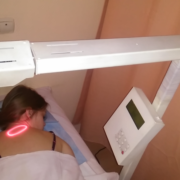
EHF EHF
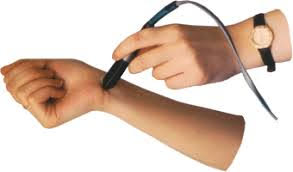
To date, reliable data have been obtained that, with the use of EHF EHF, acute pain significantly reduces and a muscle relaxant effect occurs, microcirculation is improved, blood pressure is normalized. At the biochemical level, the normalization of the ratio of neurohumoral substances to serotonin has been proved. ACTH, cortisol, endorphins and enkephalins after EHF sessions.
In the development of acute pain at the cervical level with recoil in the arm EMH EHF is used in continuous mode with the contact position of the emitter. Influence area - 2 acupuncture points with analgesic and swelling action for 1 session at 15 minutes exposure. Usually 10 sessions are enough.
Quantum therapy is laser focused radiation with topical application
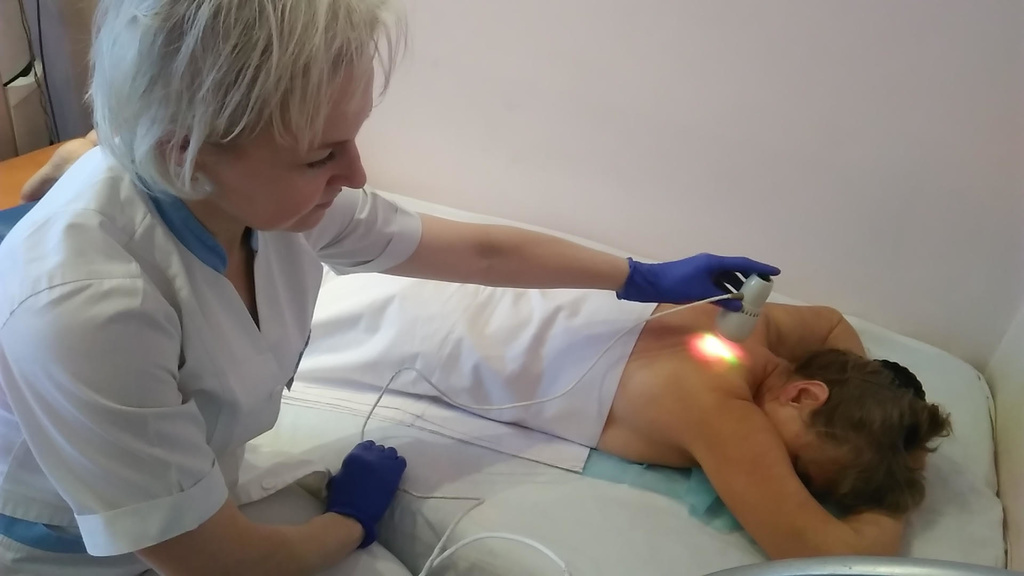
Magnetotherapy (scheme shown for pain in the hand)
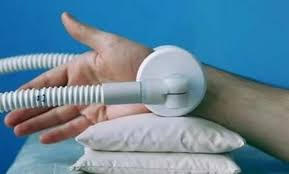
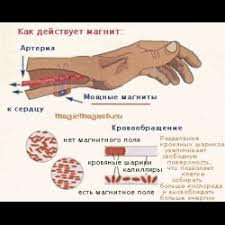
The low-frequency magnetic alternating field increases the speed of conducting the potential of action on the nerve, increases the excitability of nerve fibers, reduces perineural edema. In addition, low-frequency MP magnetotherapy restores the functional properties of the afferent conduit of pain-sensitive afferent conductors, leading to significant attenuation or termination of impulse from the focus of pain! In the case of acute pain, 7-10 procedures with daily treatment or 15 procedures with "one day" treatment are sufficient.
Ultrasound scanning is zonal
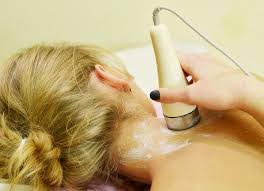
Sub-acute stage. In the subacute stage, acupuncture is relevant.
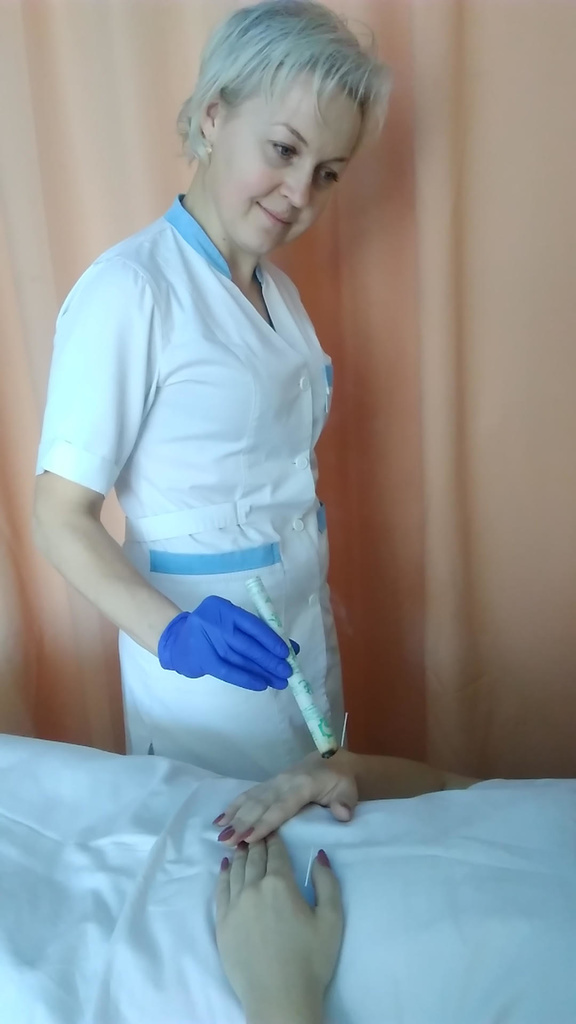
We apply acupuncture points segmentally and in areas of corresponding radical innervation. Due to the reflex and segmental effects, acupuncture relieves pain, muscle tension, and has a beneficial effect on the psycho-emotional sphere (which is especially necessary in the presence of pain). The course of treatment is 10 days.
Reflexology: segmental electrotherapy and electropuncture

Parameters, time exposure, area of exposure and number of procedures are assigned based on the patient's condition.
It is advisable to apply a relaxing neck-collar massage, spot massage. This is especially true with palpation of palpable muscle tension and areas of increased tenderness, with prolonged forced neck position. Duration of treatment is determined by the patient's condition and varies within 10-15 days.
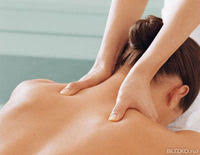
The chronic stage
Needs thoughtful tactics. Wider use of reflexology and physiotherapy measures, longer treatment period is advisable. The relevance of acupuncture is due not only to the segmental influence on the problem areas, but also due to the positive influence on the emotional background, which due to the protracted interruption of pain syndrome becomes labile with elements of depression and anxiety.
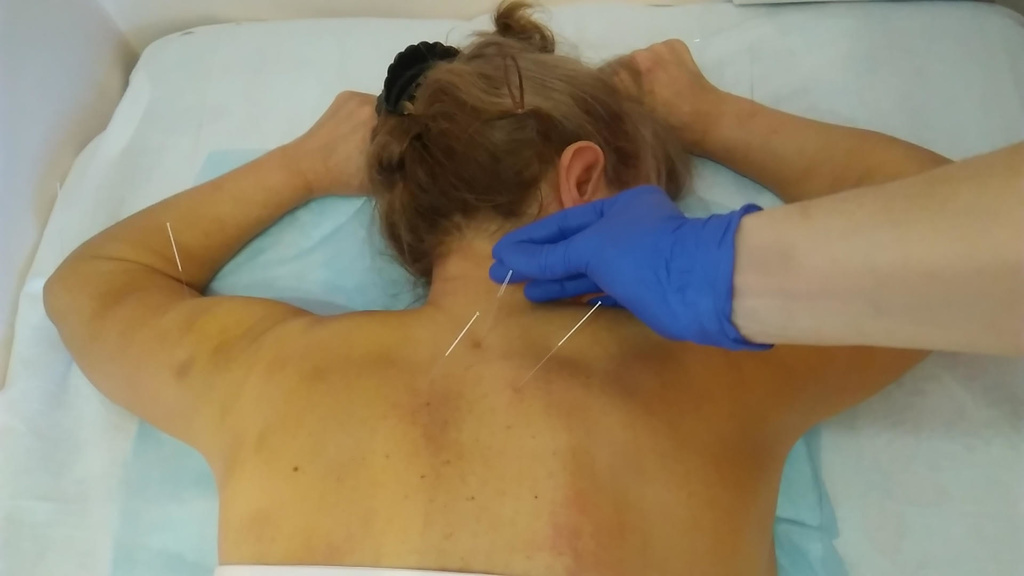
Good therapeutic effect is observed with zonal application of electropuncture and laser puncture
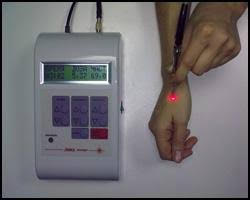
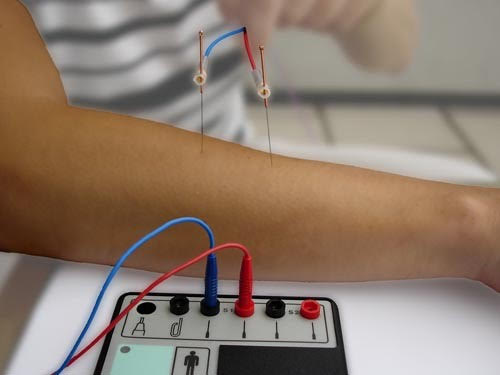
on points of acupuncture in zones of corresponding radical innervation.
It is advisable soft technique of massage of periarticular muscles.
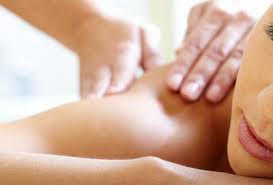
The number of sessions is always greater than 10, usually 15.
Topical postisometric relaxation
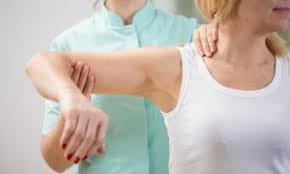
and developing the correct motor stereotypes, kinesitherapy and exercise therapy.
